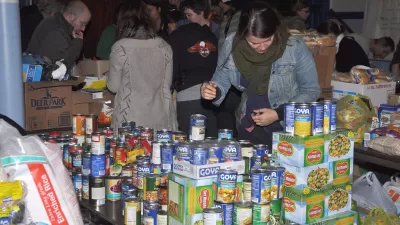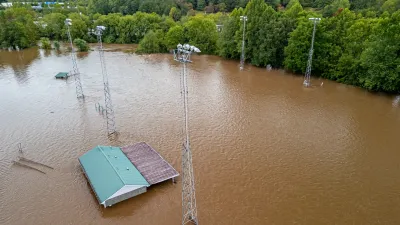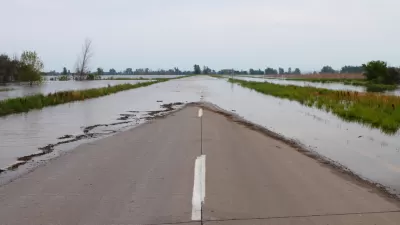In blacked-out Manhattan, recovery is slow, if not entirely absent. To help fill the void left by public agencies, a self-organized recovery effort is trying to help those left behind, with the assistance of technology.
Anya Kamenetz reports on the increasingly desperate situation in New York's high-rise public housing buildings, where residents that couldn't evacuate before the storm had been without power or water since Monday night. At a building on Mahnattan's Lower East Side she joined a group of volunteers who had seen "a notice on a website,
got an email, or saw a Tweet that volunteers were needed at 46 Hester
Street on the Lower East Side, where a local Asian community
organization called CAAAV has become the hub for an almost completely self-organized aid effort."
"On each floor above the fourth we find elderly and sick people who have
been unable or afraid to venture out since the start of the storm," says Kamenetz. "'I've
fallen down twice--that was enough for me,'" says Estelle Kleinhaus, a
white-haired woman on the 12th floor who lives alone. They need food,
drinking water, and medication. More able-bodied residents have been
filling buckets at a hydrant outside in order to flush toilets."
"The lack of an official, coordinated door-to-door response here in
downtown, close to some of the most affluent neighborhoods in the
country, is a bit chilling...If you were going to target people most likely
to need help when the power and water is out, it would be the elderly
residents of high-rise towers like the ones that surround us."
FULL STORY: What’s Really Happening In Blacked-Out Manhattan

Planetizen Federal Action Tracker
A weekly monitor of how Trump’s orders and actions are impacting planners and planning in America.

Maui's Vacation Rental Debate Turns Ugly
Verbal attacks, misinformation campaigns and fistfights plague a high-stakes debate to convert thousands of vacation rentals into long-term housing.

San Francisco Suspends Traffic Calming Amidst Record Deaths
Citing “a challenging fiscal landscape,” the city will cease the program on the heels of 42 traffic deaths, including 24 pedestrians.

Amtrak Rolls Out New Orleans to Alabama “Mardi Gras” Train
The new service will operate morning and evening departures between Mobile and New Orleans.

The Subversive Car-Free Guide to Trump's Great American Road Trip
Car-free ways to access Chicagoland’s best tourist attractions.

San Antonio and Austin are Fusing Into one Massive Megaregion
The region spanning the two central Texas cities is growing fast, posing challenges for local infrastructure and water supplies.
Urban Design for Planners 1: Software Tools
This six-course series explores essential urban design concepts using open source software and equips planners with the tools they need to participate fully in the urban design process.
Planning for Universal Design
Learn the tools for implementing Universal Design in planning regulations.
Heyer Gruel & Associates PA
JM Goldson LLC
Custer County Colorado
City of Camden Redevelopment Agency
City of Astoria
Transportation Research & Education Center (TREC) at Portland State University
Jefferson Parish Government
Camden Redevelopment Agency
City of Claremont





























